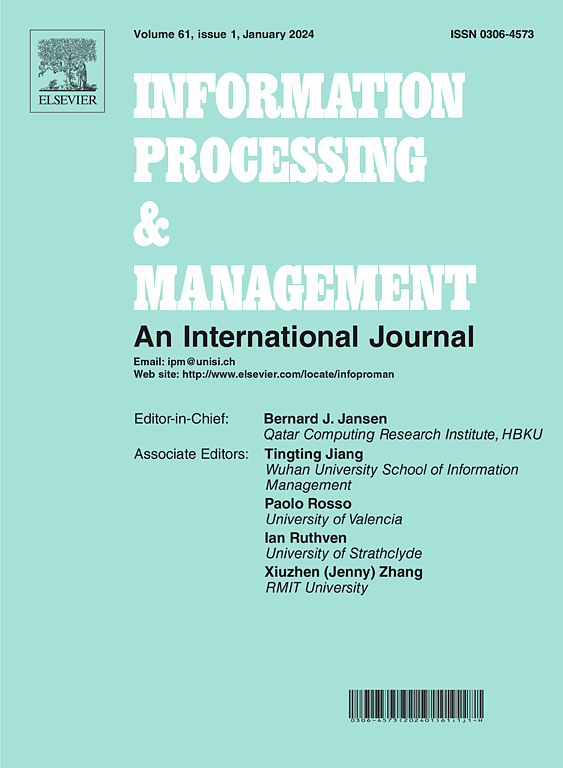FGVIrony:中文细粒度言语反语数据集
IF 7.4
1区 管理学
Q1 COMPUTER SCIENCE, INFORMATION SYSTEMS
引用次数: 0
摘要
言语反讽,被认为是说话者的意图和他们明确的语言表达之间的不一致,通常以微妙的形式表现出来,如反讽、讽刺和讽刺。目前的研究往往不能区分这些细粒度的言语反讽类别,主要集中在文本中的一般检测。因此,在这项工作中,我们引入了一个新的任务,即细粒度言语反语识别,旨在不仅识别言语反语的存在,而且区分其各种类型。此外,现有研究的一个显著缺陷是缺乏针对细粒度言语反讽的数据集,特别是在汉语语境下。为了解决这个问题,我们开发了FGVIrony数据集,其中包括10,252个样本,包括6,790个非讽刺和3,462个口头讽刺实例,进一步分类为1,796个讽刺实例,362个讽刺,577个讽刺,192个夸大,79个轻描淡写和456个反问句。在FGVIrony数据集上,我们探索了准确识别细粒度言语反讽的挑战。此外,为了研究当前方法固有的局限性,我们提出了一种级联多提示学习方法,CMP,旨在提高识别准确性。FGVIrony数据集可在。本文章由计算机程序翻译,如有差异,请以英文原文为准。
FGVIrony: A Chinese Dataset of Fine-grained Verbal Irony
Verbal irony, identified as an incongruity between a speaker’s intended meaning and their explicit linguistic expression, often manifests in nuanced forms such as irony, sarcasm, and satire. Current research often fails to differentiate among these fine-grained categories of verbal irony, primarily focusing on generic detection in texts. Therefore, in this work, we introduce a new task for fine-grained verbal irony recognition, aims not only to identify the presence of verbal irony but also distinguish among its various types. Besides, a notable gap in existing research is the lack of datasets tailored to fine-grained verbal irony, particularly in the context of the Chinese language. To tackle this issue, we have developed the FGVIrony dataset, which comprises 10,252 samples, including 6,790 non-ironic and 3,462 verbal ironic instances, further classified into 1,796 instances of irony, 362 of sarcasm, 577 of satire, 192 overstatements, 79 understatements, and 456 rhetorical questions. On the FGVIrony dataset, we explore the challenges of accurately identifying fine-grained verbal irony. Additionally, to investigate the limitations inherent in current methodologies, we propose a cascaded multi-prompt learning approach, CMP, designed to enhance recognition accuracy. The FGVIrony dataset is available at .
求助全文
通过发布文献求助,成功后即可免费获取论文全文。
去求助
来源期刊

Information Processing & Management
工程技术-计算机:信息系统
CiteScore
17.00
自引率
11.60%
发文量
276
审稿时长
39 days
期刊介绍:
Information Processing and Management is dedicated to publishing cutting-edge original research at the convergence of computing and information science. Our scope encompasses theory, methods, and applications across various domains, including advertising, business, health, information science, information technology marketing, and social computing.
We aim to cater to the interests of both primary researchers and practitioners by offering an effective platform for the timely dissemination of advanced and topical issues in this interdisciplinary field. The journal places particular emphasis on original research articles, research survey articles, research method articles, and articles addressing critical applications of research. Join us in advancing knowledge and innovation at the intersection of computing and information science.
 求助内容:
求助内容: 应助结果提醒方式:
应助结果提醒方式:


